Tips to Recover From Shin Splints
Since I’m on holiday this week, I’ve left things in the capable hands of my good friend Jon Coulson.
When it comes to training and fitness, Jon’s got a huge treasure-trove of valuable stuff in his head to share. So I know you’ll get a lot out of these important tips.
Thanks Jon.
Dealing with Shin Splints
With all the nice weather we’ve had over the past few months I’ve seen a big increase in the number of people outside going for runs. Maybe you’re one of them?
Unfortunately, an annoying effect which seems to affect many people is shin splints. The effects can last temporarily – for a few minutes – to a more permanent ongoing issue.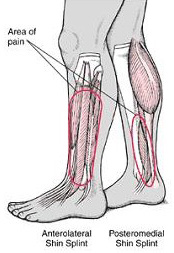
So what are shin splints? The term ‘shin splints’ is a broad generic term that describes a number of issues with the front of the lower leg. The sort of problems can range from muscle imbalance, over-use, DOMS and inflammation to more serious issues such as fractures and in the worse case chronic compartment syndrome.
In the more serious cases, always seek professional medical advice. For the other issues, carry on reading.
The best way to approach shin splints is with a three prong attack and as with all types of injuries – prevention is better than curing. So don’t wait until you actually have issues to try these out.
1) Massage and trigger point therapy
Part of the cause of shin splints can be due to over use of the muscles around the shin. Over time, this can cause the muscle fibres to ‘bunch’ up causing knots and this creates tender spots along the muscles. What can you do?
A) Treat yourself to a massage! You know you want to really so use this as an excuse. If you’re able to, find someone who specialises in sports massage or trigger point therapy
B) Self massage. Using a tennis ball to roll over the affected area is a poor man’s substitute, start lightly then build up the pressure. I would usually recommend the following:
30 seconds of rolling a tennis ball over the sole of each foot
30 seconds of rolling along the front of each shin, concentrating on tender areas
30 seconds of rolling along the calf muscles of each leg
2) Stretching and mobility work
Another area that can lead to shin splints is over tight calf muscles and poor ankle mobility. Tight calf muscles cause a pull on the heel pulling your foot down. In turn, this causes your shin muscles to become overstretched.
Poor ankle mobility will ultimately cause poor running technique. Any kind of stiffness or poor mobility in the ankles will feed up to your knee and hip joints and cause bad form. Poor form over thousands of repetitions (think how many times your feet hit the ground) leads to injury. Here are a few ideas:
A) Calf stretches – lots and lots of calf stretches. When you think about how much you use your calf muscles on a daily basis they require a lot of stretching to undo that. Start with 2 set of 30 seconds standing calf stretches on each leg. Add more sets if you feel you need it.
B) Ankle mobility – There are two exercises I like to use to improve ankle mobility.
i) Sit on a chair and roll your feet in circles, 10 reps in one direction then 10 reps in the other direction. Flex your feet forward and backwards (up and down) for 10 reps each. Finally flex your feet inwards and outwards for 10 reps each way
ii) Facing a wall, stand about 8 – 10 inches away. Keeping both feet flat on the floor, try to touch your knees to the wall. Start with 5 reps and work up to 10 reps.
3) Strength training
The final piece of the shin splint puzzle is muscle strength imbalances. When working out, people do lots of calf raises but very few do anything to strengthen the shins. This causes the shin muscles to become weak compared to the calf muscles. In addition, strengthening the shin muscles improves the shins ability to handle exercise.
i) Walk on your toes for 1 set of 30 seconds. Build up to 2 sets
ii) Walk on your heels for 1 set of 30 seconds. Build up to 2 sets.
iii) Toe raises – in a seated position with your feet flat on the floor, place a dumbbell or weight plate on the end of each foot. Keep your heels on the ground; lift your toes up against the resistance. At first, you may not be able to handle much weight for very long but your strength soon improves. Start with 1 set of 8 reps and build from there.
iv) Anterior tibialis raise – Along similar lines to toe raises, this time, hold a dumbbell between your feet, keep your feet off the ground and raise and lower the dumbbell
v) Using a band – One of my favourite strengthen exercises I discovered when I strained the ligaments in my ankle. Attach a band to your foot, like a flex band or thera band, which will then allow you to move your foot in any direction against resistance thereby building the muscles. A good video to illustrate this is:
In addition to the exercises shown, you can also have a partner hold the band or attach it to something secure and perform the exercises which create a different resistance.
Putting it all together
What I’ve found to work is incorporating the self massage and ankle mobility work into your general warm up and then focusing on some strength work early on in your workouts.
After your workout, remember to stretch, stretch and stretch!
Below are two examples of how I have incorporated the ideas into part of a workout I devised for two running friends:
Workout 1
Tennis ball rolls on the soles of the feet – 30 seconds
Backwards jogging – 30 seconds
Hurdle step sequence – 5 each side (stand on 1 foot and raise the other foot, bring the knee across the body and then out towards the other side)
Ankle mobility exercise – 5 – 10 reps
Anterior tibialis raise – 2 sets 10 reps
Lateral lunges – 2 sets 6 – 10 reps
Workout 2
Golf ball rolls on the soles of the feet – 30 seconds each foot
Crossover run – 30 seconds each direction
Backpedal run – 30 seconds
Ankle mobility exercise – 10 reps
Toe raises – 2 sets 6 – 10 reps
Side jumps – 5 – 8 sets of 2 reps
Cool down for each workout
Ankle circles – 10 each directions
Calf stretches
Achilles stretch
Straight leg cross over stretch
It isn’t an exhaustive list but covers the main techniques I’ve found to help people. Hopefully the above has given you some ideas if you are currently suffering from shin splints or want to look at ways of preventing them.
~~~~~~~~~~~~~~~~~~~~~~~
Wow, that was super-informative and very helpful indeed, especially for us regular runners!!!
Thanks again to Jon for covering me while I’m away. Feel free to get in touch with Jon on Twitter where he tweets as @JonCoulson.
Have a fit, fun and fantastic day.
Girlwithnoname
9082





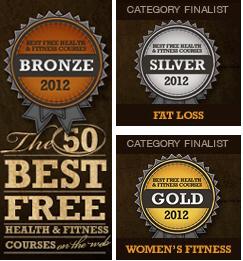


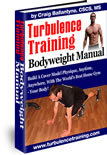
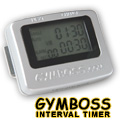





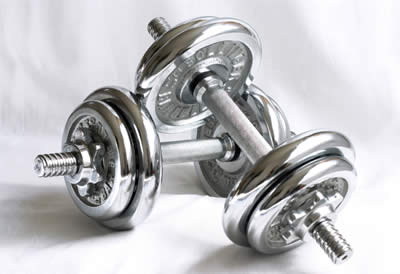
September 2nd, 2010 at 5:31 am
There are some really good tips here that I will share with my athletes. Thanks for the post!
September 4th, 2010 at 3:22 am
Thank you! I have suffered from shin splints in the past and I know how frustrating and painful they can be so I hope the tips help.
October 8th, 2010 at 5:19 pm
This is great! I get shin splints pretty bad so have been looking for ways to prevent/relieve them.
Question: which move is the Achilles stretch?
October 8th, 2010 at 5:46 pm
The achilles stretch isn’t show in the article. A basic stretch would be to go into a normal calf stretch. That is where you stand with one foot in front of the other and stretch out your calf in your rear leg.
The difference with the achilles stretch is that you bend your back knee until you feel a stretch in your achilles. A good example is in this diagram
http://www.kuma-jusei.com/image44.gif